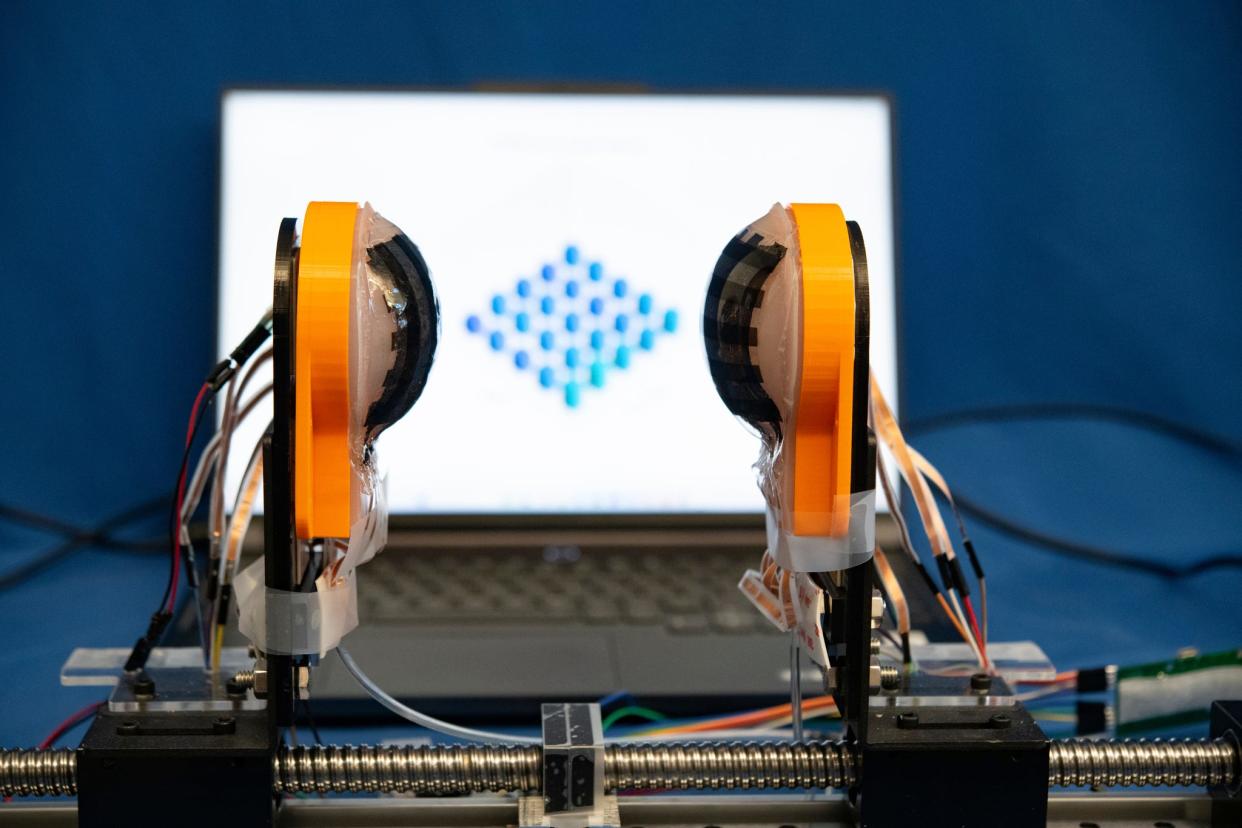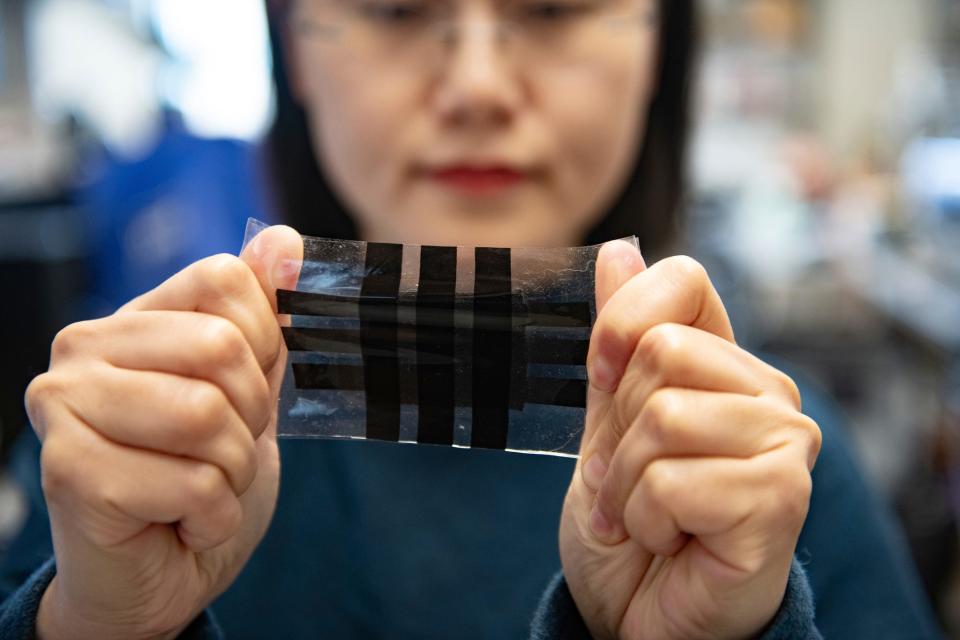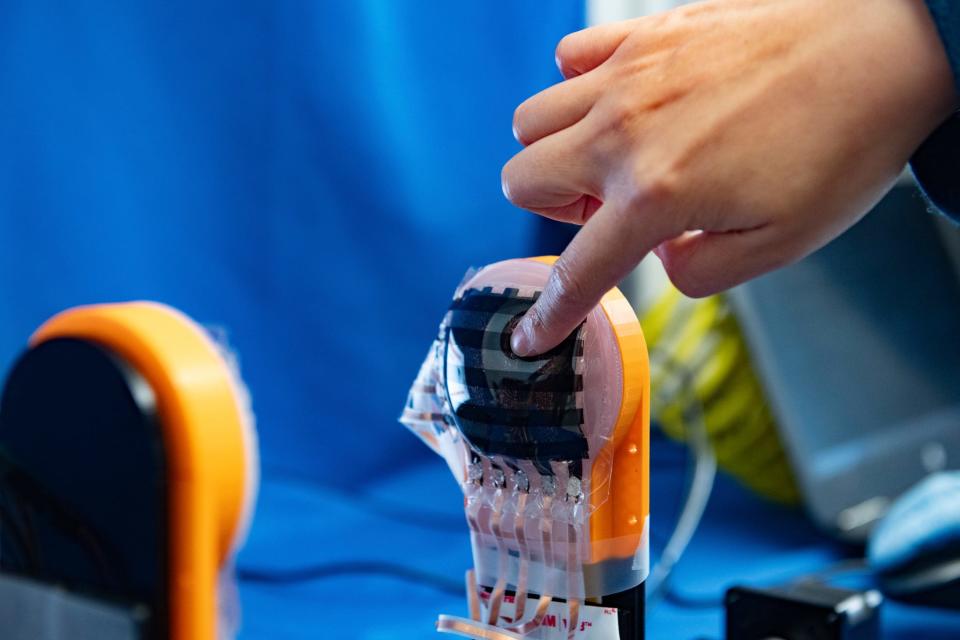New 'e-skin' mimics human skin and could one day be used on robots, UT researchers say

Researchers at the University of Texas have developed the first stretchy, electronic skin with many of the same characteristics as human skin.
Here's what we know:
University of Texas develops 'e-skin' technology
The researchers have committed to creating a stretchy skin material for robots and other devices. Current e-skin technology loses sensory accuracy when it stretches, and that has stalled further progress.
"Much like human skin has to stretch and bend to accommodate our movements, so too does e-skin," said Nanshu Lu, a professor in the UT Cockrell School of Engineering's department of aerospace engineering and engineering mechanics, who led the project. "No matter how much our e-skin stretches, the pressure response doesn't change, and that is a significant achievement."

The research was published recently in the science journal Matter.
How does 'e-skin' work?
E-skin uses pressure sensors to determine what level of force is required to complete a given task. However, current e-skin models that are stretched lose this ability as they sense the deformation.
Researchers in Austin have created "inflatable probes and grippers that could change shape to perform a variety of sensitive, touch-based tasks," according to a news release from UT News.
Whereas previous models have used either capacitive or resistive responses, this model uses both simultaneously.

What can 'e-skin' be used for?
As millions of people continue to live to advanced ages, the global medical system has reached capacity. Robots and other technology can be used to provide care despite the limited availability of human caregivers.
“In the future, if we have more elderly than available caregivers, it’s going to be a crisis worldwide,” Lu said. “We need to find new ways to take care of people efficiently and also gently, and robots are an important piece of that puzzle.”
Beyond aiding older adults, e-skin technology might prove critical in disaster situations. Advances in the field could be used to help find and treat injured people, such as those involved in an earthquake or building collapse. Future developments could allow robots to administer life-saving care, such as CPR.
This article originally appeared on Austin American-Statesman: New 'e-skin' mimics human skin, may enhance robots, UT researchers say

